A New Era of Swimming: The Post-Phelps Era
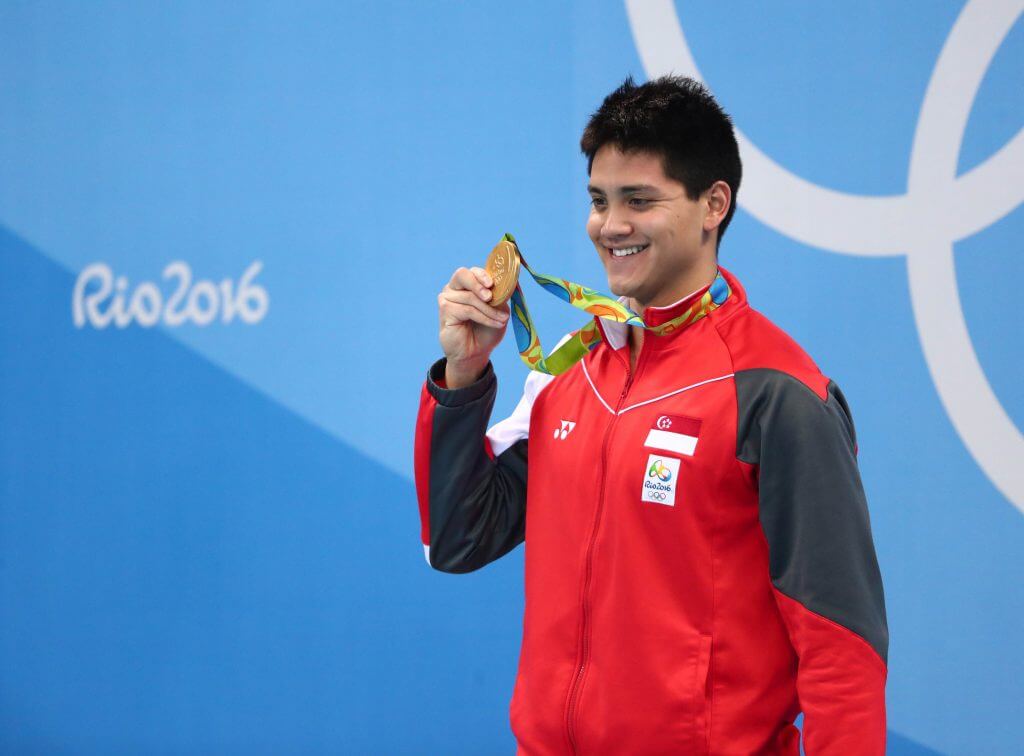
Commentary By Eamonn Keenan, Swimming World College Intern.
The world of professional swimming has been accustomed to both volatility and stagnation. Throughout the course of swimming history, we’ve witnessed absolute domination from household names like Michael Phelps, Janet Evans and Ian Thorpe, to name a few. Their legacies are cemented by the fact that watching them swim was not the observance of a race, but the marveling of a monumental feat.
Today, we find ourselves in a new era of swimming – one that is characterized by amateurism and uncertainty: the Post-Phelps Era. It all began with the 2016 Rio Olympics, where the invulnerable status of the elite veterans was usurped by a plethora of young athletes with no expectations.
The History
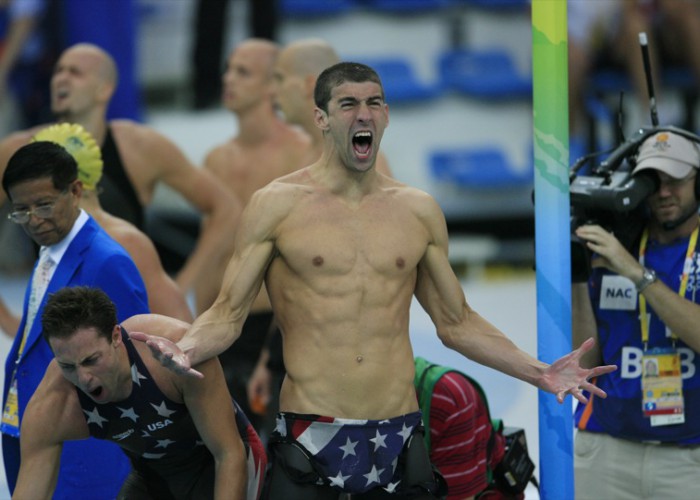
So what exactly does it mean to be an “elite veteran”? An elite veteran is an athlete who not only has the ability to continually dominate year after year but also possesses the mental fortitude to be consistent in his or her performances.
The results of both the Beijing and London Olympics, and the majority of the major international competitions in between, are not very surprising. The podium was for the most part familiar – occupied by the big names of not only the events but also of the sport in general. Phelps, Rebecca Adlington, Ryan Lochte, Stephanie Rice, Sun Yang, Rebecca Soni; the rigidity among medal winners was undeniable.
Additionally, the veterans who dominated swimming between 2008 and 2012 all followed a similar trajectory: they made their first international team or had their first breakout swims in college or right after college (or around that age, if they did not attend). Thereafter, they began to solidify themselves as experienced professional athletes.
Take Nathan Adrian for example. As a freshman in college, Adrian placed sixth in the 100 free at 2007 NCAAs. He redshirted his 2008 season to focus on Olympic Trials, where he had a breakout swim to qualify for the relay at the 2008 Olympic Games.
After going to the Beijing Olympics and winning a gold medal in the relay, Adrian would go on to win the 100 free at NCAAs the next three years in a row and win the 50 free in both 2009 and 2011. He set American records in both races. Adrian qualified for every international team that followed Beijing, including the 2012 Olympics, where he would win gold in the 100m free as a post-grad – his first individual medal earned at a major international competition. Since 2012, he has unquestionably been the predominant American sprint freestyler.
That was the typical progression of veteran swimmers at the time, although Adrian developed a little earlier than most of his rivals such as James Magnussen or Brent Hayden.
The Catalyst
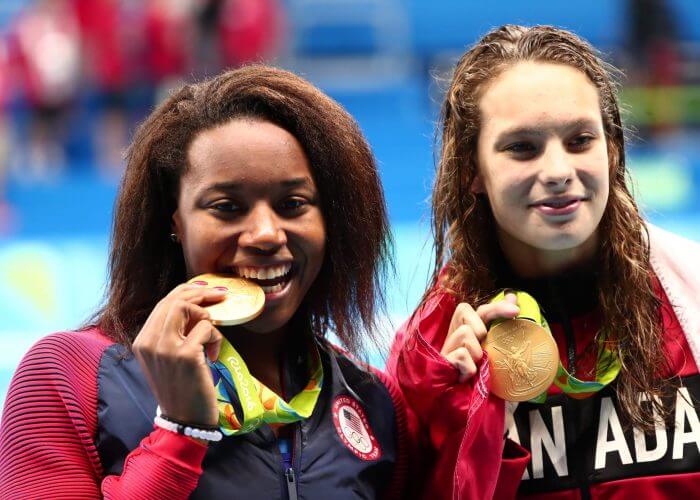
Photo Courtesy: Rob Schumacher-USA TODAY Sports
The Rio Olympics became the moment when a lot of young swimmers realized that the veterans could in fact be taken down. Many of these swimmers didn’t follow the same trajectory – they were younger and much less experienced in international competition than their veteran rivals. Nevertheless, they seemed to believe that they could be the ones to shift the paradigm.
Rising Texas Junior Joseph Schooling claimed the gold medal in the men’s 100 fly, denying Michael Phelps an Olympic three-peat, as well as beating out veterans Laszlo Cseh and Chad Le Clos.
Sixteen-year-old Penny Oleksiak tied for gold in the 100 free with rising Stanford Junior Simone Manuel. The two touched ahead of both Cate Campbell and Sarah Sjostrom – the former and current world record holders – and defending Olympic gold medalist Ranomi Kromowidjojo.
Eighteen-year-old Kyle Chalmers won the men’s 100 free over 2012 Olympic Champion Adrian and Cameron McEvoy, the textile world record-holder.
Soon-to-be Indiana Sophomore Lilly King won the women’s 100m breast over four-time world champion Yuliya Efimova and the former world record holder Ruta Meilutyte. She would go on to break the world record in both the 50 and 100 breast at the 2017 FINA World Championships.
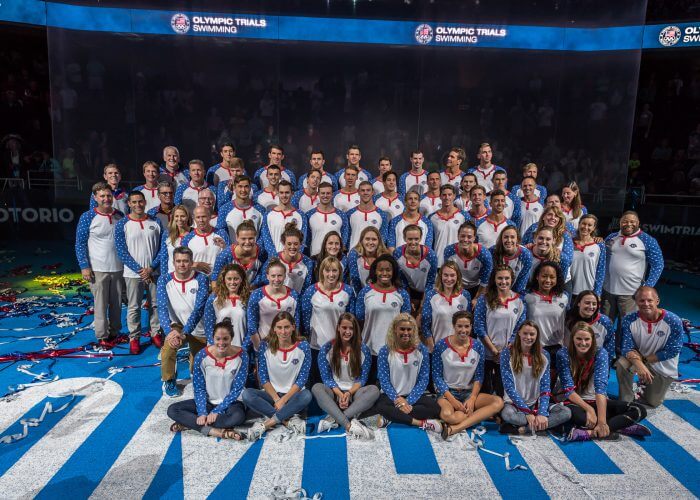
Photo Courtesy: Peter H. Bick
Even the general competitive landscape was different at the 2016 Olympics than previous ones. Looking at the U.S. Olympic Team in 2012, 46 percent of the men and 44 percent of the women had qualified for a previous Olympic Team. In 2016, only 24 percent of the men and 37 percent of the women were Olympic veterans.
It’s clear that college-aged swimmers are not just the future of international competition – they are the present, too.
All of this change is significant, which begs two questions: what facilitated it to happen in the first place, and what does it mean for the future of our sport?
There are two important aspects to consider in answering these questions.
Monkey See, Monkey Do
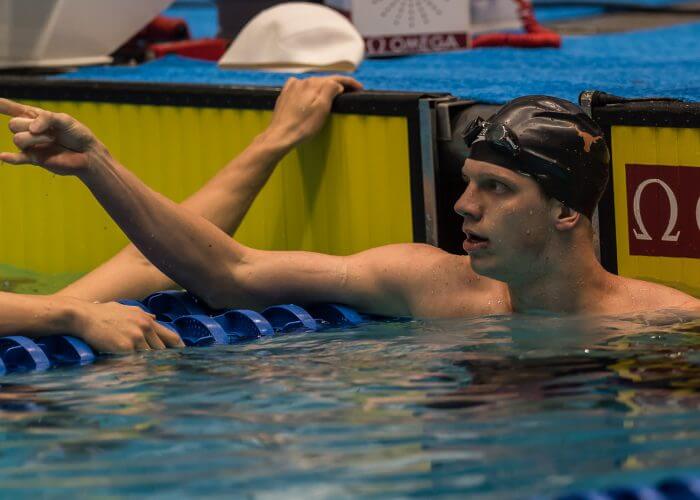
Photo Courtesy: Peter H. Bick
There is something very crucial about the notion of seeing someone do something unheard of and thinking: “I can do that, too!” In the sport of swimming, the two most premier examples of this would be breaking a record or dethroning a veteran.
The progression of the men’s 200 yard freestyle is one of the best examples of how impactful this phenomenon can be. In 2015, Christian Quintero won the title in 1:32.06. It took a 1:33.26 to qualify for top eight, and a 1:34.06 for top 16. Only three people broke 1:33. In an interview with Quintero after his team won the 800 free relay, an interviewer brought up Simon Burnett’s 200 freestyle NCAA record of 1:31.20 set back in 2006.
“That record will last a long time,” Quintero said of Burnett’s record. “It is a really fast time.”
In 2016, Townley Haas swam a 1:30.46 to win the title and destroy the NCAA and American Record. It took a 1:33.18 to qualify for top eight, and a 1:34.23 for top 16. Three people broke 1:32 (Haas, Matias Koski, Jack Conger). Nine people broke 1:33.
In 2017, Haas’ 1:30.65 won the title, but three people have now broken the 1:31 barrier. Seven people have broken 1:32. It took a 1:33.21 to qualify for top eight and a 1:33.58 for top 16.
In 2018, 1:29.50 won the title, again by Haas. Indiana’s Blake Pieroni joined Haas under the 1:30 barrier. Nine people have broken 1:32. It took a 1:32.84 to qualify for top eight, and a 1:33.70 for top 16. 1:34.44 was the time it took to get invited to NCAAs.
To give credit where credit is due, Haas was the pioneer of this radical progression. He opened the door that made everyone else realize Burnett’s record wasn’t as far-fetched as they had previously thought. Haas showed his competition that they can go way faster than what was thought to be possible.
All Openings are Up for Grabs
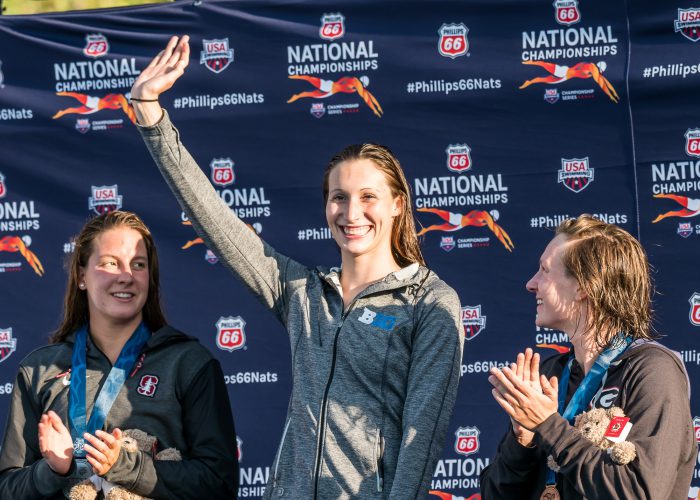
Photo Courtesy: Peter H. Bick
When Phelps and Lochte were in their prime, no one could touch them in the IMs – in fact, no one was even close. Katie Ledecky doesn’t let anyone else be on TV when she swims, and Adam Peaty is really just that much better at breaststroke than anyone else in history.
Elite veterans are put on a pedestal for a reason: they rarely lose, if ever. It must feel impossible for anyone to compete against the expectation of absolute dominance.
When there is the absence of a veteran or a true favorite in an event, however, things get a lot more interesting. This was best exemplified recently in the women’s 400 IM at the 2018 Phillips 66 US Nationals. Three-time Olympian Elizabeth Beisel was the primary American 400 IMer last summer, but she retired after competing at last year’s World Championships.
Ella Eastin, who recently destroyed the American record in the short course yards 400 IM, was diagnosed with mononucleosis three weeks out from the meet and thus was not expected to be a heavy contender for the national title. Leah Smith has been the U.S.’s number two after qualifying for Worlds in this event in 2017. Whereas she looked like the person to beat coming into 2018, she’s nowhere near being considered a “veteran,” and that’s a big difference. With a bunch of unfamiliar faces in the women’s 400 IM final, Smith seemed to be the obvious pick, especially as she charged to a strong lead in the first 200.
In the last 100, however, Penn State’s Ally McHugh and Stanford’s Brooke Forde ran down Smith and touched 1-2, qualifying for their first major international team. McHugh dropped over five seconds from her previous best time, while Forde dropped a little over four seconds.
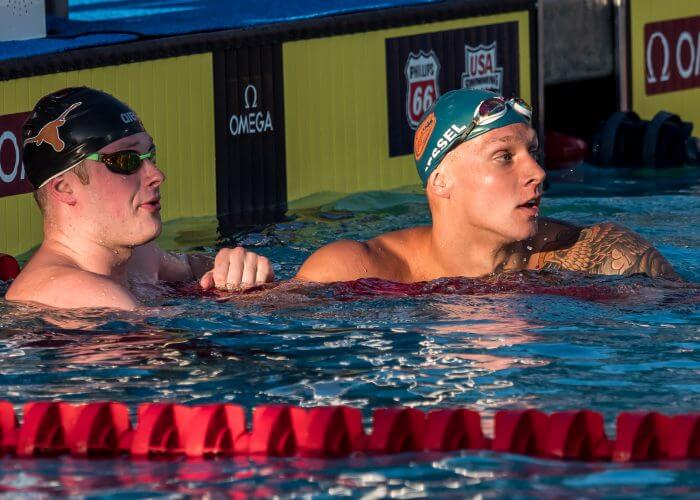
Photo Courtesy: Peter H. Bick
U.S. Nationals was filled with many of these types of “upsets” – Andrew Seliskar winning the 200 free, Michael Andrew winning the 50 free and 100 breast, Justin Wright in the 200 fly, among others. Although these were all upsets, the favorites in these events weren’t established like Phelps, Ledecky, and Lochte were.
So long as there is an absence of a true elite veteran, you can expect that event to be extremely volatile until one has established him or herself. It has been both assumed and widely predicted that people like Caeleb Dressel, King and Ryan Murphy are going to be the elite veterans of this new era. Even though they have demonstrated that they have the talent to do so, they’ve all shared setbacks along the way.
This is why the Post-Phelps Era is so exciting. The predominance of young athletes in the international scene means that anyone can theoretically show up and be the next person to beat.
The world of swimming has changed from how we once knew it. Don’t be surprised if your favorite to win gets taken down.
All commentaries are the opinion of the author and do not necessarily reflect the views of Swimming World Magazine nor its staff.




Yes very well written and true too just take the mens 50 free as an exsmple. Last year at the world’s Caleb Dressel had an incredible swim and everyone was already crowning him as the next Olympic champion and that nobody would get even close to him and then yesterday Ben Proud pulled off an even more amazing time only in the Semi finals.